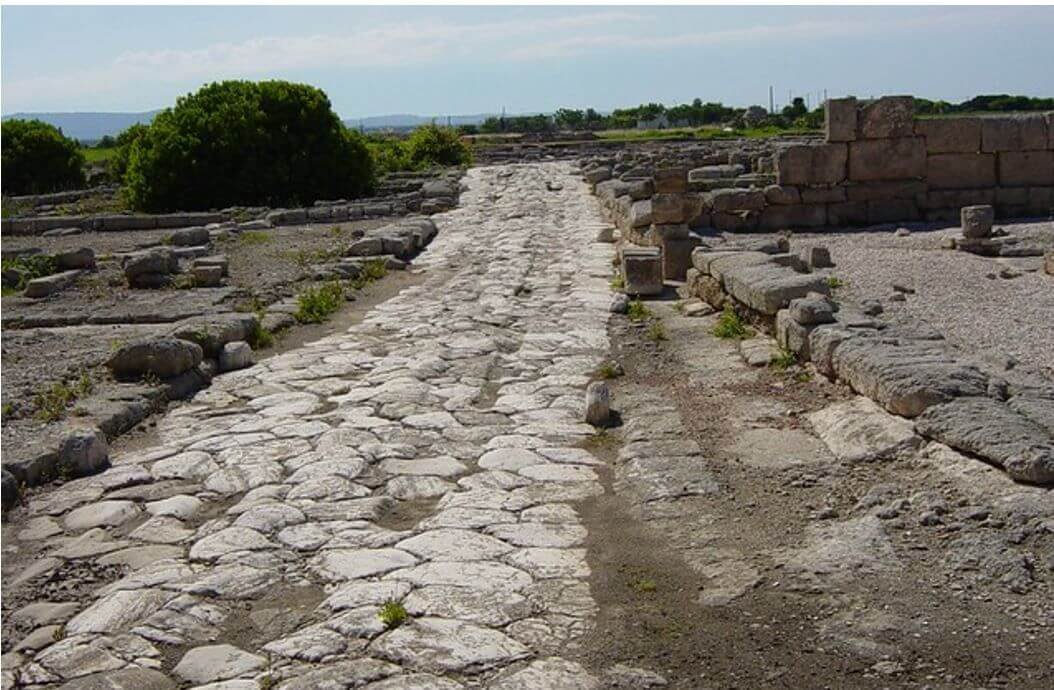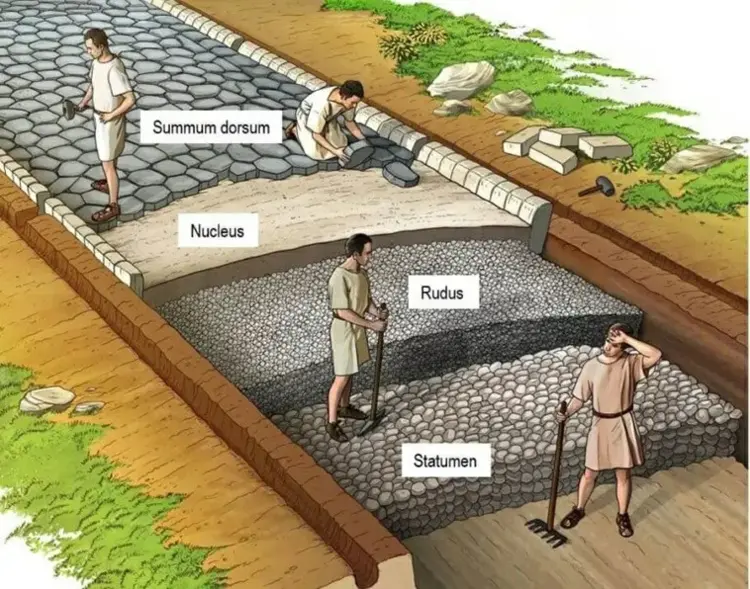In spite of movies, Roman roads were never designed for wheeled vehicles. They were designed to move the legions on foot. Put a layer of asphalt based concrete over that road and it will provide a smooth surface for decades.Not something I would want to drive on.

You are using an out of date browser. It may not display this or other websites correctly.
You should upgrade or use an alternative browser.
You should upgrade or use an alternative browser.
Mystery of why Roman buildings have survived so long has been unraveled, scientists say
- Thread starter buster
- Start date
I agree with your assessment of slavery as a factor. While slavery would reduce labor costs, many other ancient civilizations utilized slavery, without leaving us a lot of aqueducts, amphitheaters, roads, and bridges that the Romans did that have lasted till the modern day.
As far as the treatment of slaves back then, it was probably due more to the skill level of the slave, which in turn determined how much money could be made out of them. So-called urban slaves (slaves that were doctors and tutors, as well as others with a marketable skill like a scribe who could read & write Greek, or make pots or even manage a pottery workshop) could expect better treatment than the rural slaves, who were those sent to the mines, or to the plantations to work on farms. Slaves could save up money and eventually buy their freedom from their masters. As bizarre and unlike American slavery as this sounds, a 5% tax on the manumission of slaves was what supported the retirement fund that Augustus set up for his veteran soldiers. Again, this group would be the money-making urban slaves. Those sent to work on the mines or farms could expect no money, and nothing but drudgery until their death.
As far as the treatment of slaves back then, it was probably due more to the skill level of the slave, which in turn determined how much money could be made out of them. So-called urban slaves (slaves that were doctors and tutors, as well as others with a marketable skill like a scribe who could read & write Greek, or make pots or even manage a pottery workshop) could expect better treatment than the rural slaves, who were those sent to the mines, or to the plantations to work on farms. Slaves could save up money and eventually buy their freedom from their masters. As bizarre and unlike American slavery as this sounds, a 5% tax on the manumission of slaves was what supported the retirement fund that Augustus set up for his veteran soldiers. Again, this group would be the money-making urban slaves. Those sent to work on the mines or farms could expect no money, and nothing but drudgery until their death.
Slaves have always been well treated and badly treated. Same with hired workers. A good worker was valuable, whether slave or free, and treated well because it made/makes economic sense. Slave labor was not the factor in Roman structures surviving, Roman engineering was. A Roman road is something all Arizona highway engineers should study.
They say the Great Pyramid was built with 100,000 non slave laborers paid in onions. They also say Roman soldiers were paid in salt, which is where the word salary comes from. That is part of why I do not put much faith in things "they" say.
One look at the George Washington bridge tells me a 100 years is impossible.Great article.
I teach history, and when we go over some of the Roman roads & aqueducts that are still standing, I ask students if they think any roads or buildings built today will still be standing beyond the year 3600.
What are you talking about? Looks smoother than most roads up here, once frost heave season is upon us.Not something I would want to drive on.

What are you talking about? Looks smoother than most roads up here, once frost heave season is upon us.
Is it a Roman road or is it a Michigan highway? We'll never know!
Not something I would want to drive on.

Suspect that this is what it looks like most of the year... as in, most of these Roman roads are not going to get dumped on by a huge snowstorm and have to endure periods of sub-freezing temps.
Let's not forget that Italy has a major seismic activity.Their [Rome] climate is also much more temperate and nicer than most of the USA despite being the same latitude as Chicago.
In northern provinces of the empire (nowadays France and Romania), the climate was (up until recently) less nice, with lots of freezing / defreezing cycles.
And roman architecture still stands, defying all this.
The quality of foundation work might also be a factor. Take the roads for example, meant to move legions and oxcarts only, but the foundations are very impressive.
Link
Last edited:
It really does. Down here in the south (Germany) there is still a ton of roman roads, so the construction is very well documented..The quality of foundation work might also be a factor. Take the roads for example, meant to move legions and oxcarts only, but the foundations are very impressive.
On some roads the Statumen (the lower base layer) alone was 3 feet high.
Frank

